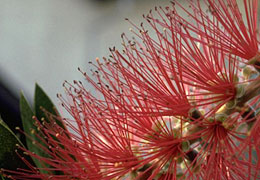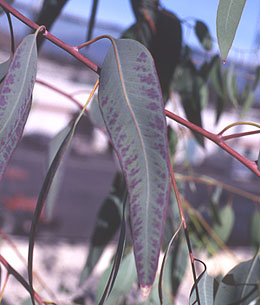Salinity Management Guide
More on the effects of certain ions
When a salt dissolves in water, it dissociates into positively and negatively charged ions. The types and concentrations of ions vary from water to water.
| Element | Form of Element * | Symbol |
|---|---|---|
| Calcium | Calcium | Ca++ |
| Magnesium | Magnesium | Mg++ |
| Sodium | Sodium | Na+ |
| Chlorine | Chloride | Cl- |
| Sulfur | Sulfate | SO4-- |
| Carbon | Bicarbonate, Carbonate | HCO3-, CO3-- |
| Potassium | Potassium | K+ |
| Phosphorus | Phosphate | HPO4-- |
| Nitrogen | Nitrate | NO3- |
| Fluorine | Fluoride | F- |
| Boron | Borate | B(OH)3 |
| Silicon | Silicate | Si(OH)4 |
* at alkaline pH of most waters
At relatively low concentrations, these ions help or at least don't harm a plant.

Plant unaffected by sodium ion, chloride ion, or boron
Injury occurs when a plant accumulates an excess of certain ions that can harm plants when present in relatively high concentrations. Sodium and chloride are two such ions that are commonly found in recycled water. The concentration of boron is also worth noting, as it takes very little beyond what is helpful for boron to be harmful. Excesses of sodium, chloride, and boron can interfere with a plant's metabolic processes or render other nutrients unavailable.
A plant injured by excessive sodium first displays mottled leaves or yellowed tissue between the veins of leaves. This is followed by leaves that are dead at their tips, at their margins, and in areas between their veins.
A plant injured by excessive chloride has unusually small leaves, a slower rate of growth, leaves with dead tips or margins, leaves with a discoloration known as bronzing, yellowed leaves that separate from their stems, and yellowed tissue.

Plant injured by excessive boron
A plant injured by excessive boron first exhibits leaves with yellowed tips. This is followed by leaves that exhibit further yellowing, dead margins or small black dead spots near the margins, and dead areas between the veins. Eventually, leaves drop off altogether.
| « Previous page | Next page » |